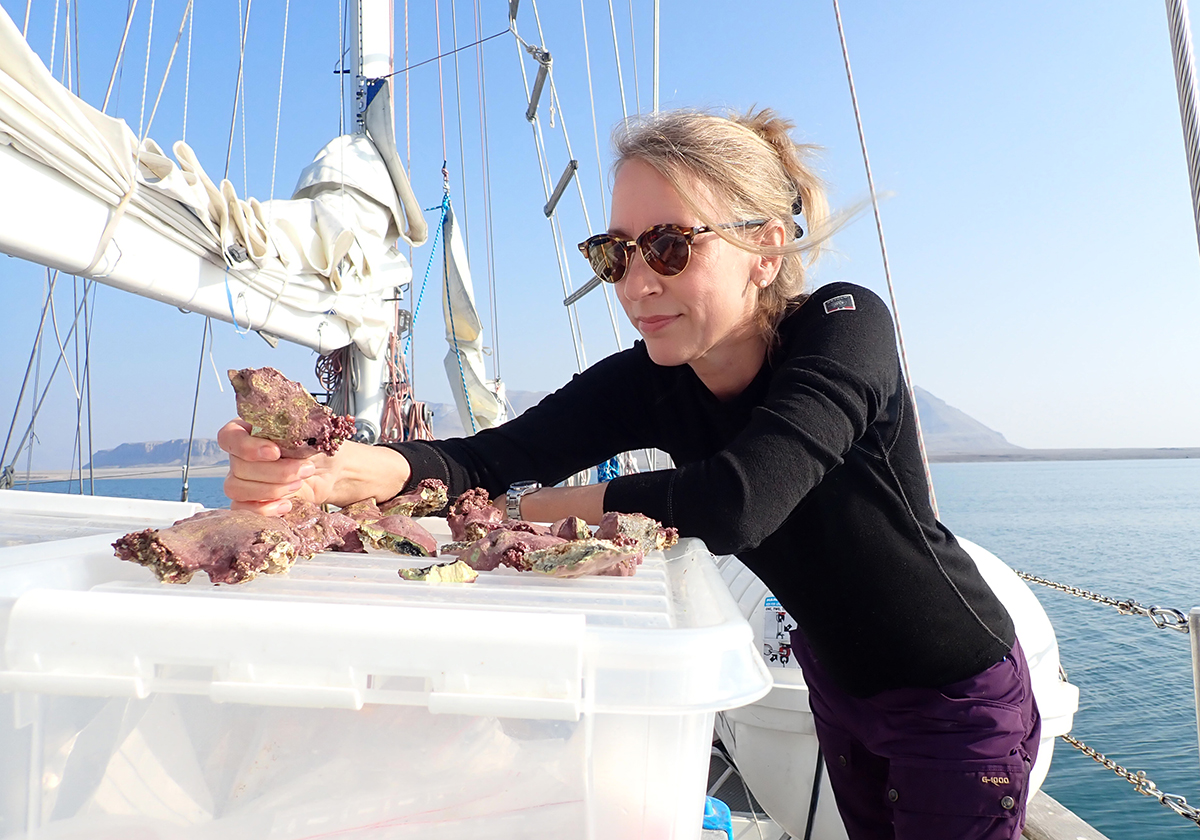During the last 120 years the surface temperature of the North Atlantic Ocean has oscillated up and down for a few decades at a time. The sea was warmer in 1930–1965 and after 1995, cooler in 1900–1930 and 1965–1995. Corresponding shifts can be traced in the weather in countries surrounding the Atlantic.
That temperatures have gone up and down several times, suggests that natural mechanisms make the Atlantic oscillate. But, this is a rocking cradle of the slow type.

Sixty to eighty years have passed from one warm period to the next. This means that the observational record is too short to exclude the possibility of coincidences/cooccurrences or to identify any mechanism behind the oscillating temperatures.
«Could it be volcanoes?» asks François Counillon. “The sun? Variations in the ocean circulations or a mere coincidence? We need data for a longer period to understand what happens.”
As a researcher at the Nansen Environmental and Remote Sensing Center, Counillon leads the Bjerknes Centre’s new effort on modeling the climate of the past. Together with colleagues he will use a climate model to simulate the Earth’s climate, not in the future, but for the previous millennium. A period of a thousand years will be long enough to explore oscillations like the one in the North Atlantic region.

Long simulations of past climate already exist. Materials from the seafloor have also documented past climate variations. The novelty lies in the coupling of such data. The Bjerknes scientists will let old seashells and corals guide a climate model.
Models give you the world
A climate model, or Earth system model, is a simplified representation of the real world, a digital globe with a geography and climate is as realistic as possible. You can start the model and see how the oceans, the air, glaciers and rain forests develop under given conditions.
Compared to observations, a benefit of models is that they give you the whole world, including properties that cannot be measured. The physics of winds and currents are the same as in the real world. A model can provide information about currents in the Atlantic Ocean a thousand years back in time – even if no Viking ever lowered an instrument into the sea.
The downside of models is that they may stray from the right path. This does not mean that anything is wrong with the model, but small deviations can change its course. History as it occurred – also in weather and ocean currents – was only one of several likely outcomes.
No wild trots
Most times, a climate simulation starts out well, with a model climate resembling the real situation. After having run for a while, the model may take another direction, like a horse allowed to walk freely across a field. Nothing is wrong with the horse, but every now and then the rider must make sure they get to the right place.
“It is like a cross-section where you can go right or left,” says François Counillon. “We want to make sure the model always chooses the right way. Data from the past will work as a compass.»
A good thing about simulating the past, is that we know what happened. Observations from old times can lead the model onto the right exit. This has also been done before, but in the new millennial simulation, François Counillon and his colleagues will tighten the reins.
The climate model will never be allowed to gallop wildly. Before it gets far, the real climate of the past pulls the reins, steering it onto the right track.
The method is called data assimilation and implies collecting all available information about the climate at any time. The complete picture is used to correct the model before letting it run through the next step. This secures a realistic climate throughout the millennium covered by the simulation.
Seashells and corals hold the reins
Observations of ocean temperatures exist only for a century or two. To reconstruct temperatures further back in time, paleoclimatologists can use substances from shells, corals or fossils found in seafloor sediments.
These are climate indicators or proxy data – not direct measurements of the climate, but of properties that were affected by the climate while the organisms were alive. By measuring these properties, one can deduce whether that period was warm or cold, dry or wet.
Records of past climate are limited compared with modern times, but assembling all available data, provides a foundation that is strong enough to rein the model.

A past closer to history
Even though the oscillation of North Atlantic sea surface temperatures have only been observed for a bit more than a decade, it is clearly present in existing simulations. In climate models, the oscillation is linked to variations in the meridional overturning circulation that includes the Gulf Stream.
In the new millennial simulation, where shells and corals bind the model to history, the representation of the North Atlantic climate will be more realistic than in previous simulations.
François Counillon and his colleagues would like to find out whether North Atlantic sea surface temperatures are influenced by volcanic eruptions, variations in ocean currents, and how much solar radiation the Earth and the ocean receives. Also, they will look into how temperatures and currents in the Atlantic Ocean interact with phenomena like the El Niño in the Pacific Ocean.
“With a better understanding of what drives variations in the ocean, we hope to improve the predictions of future climate,” says François Counillon.

